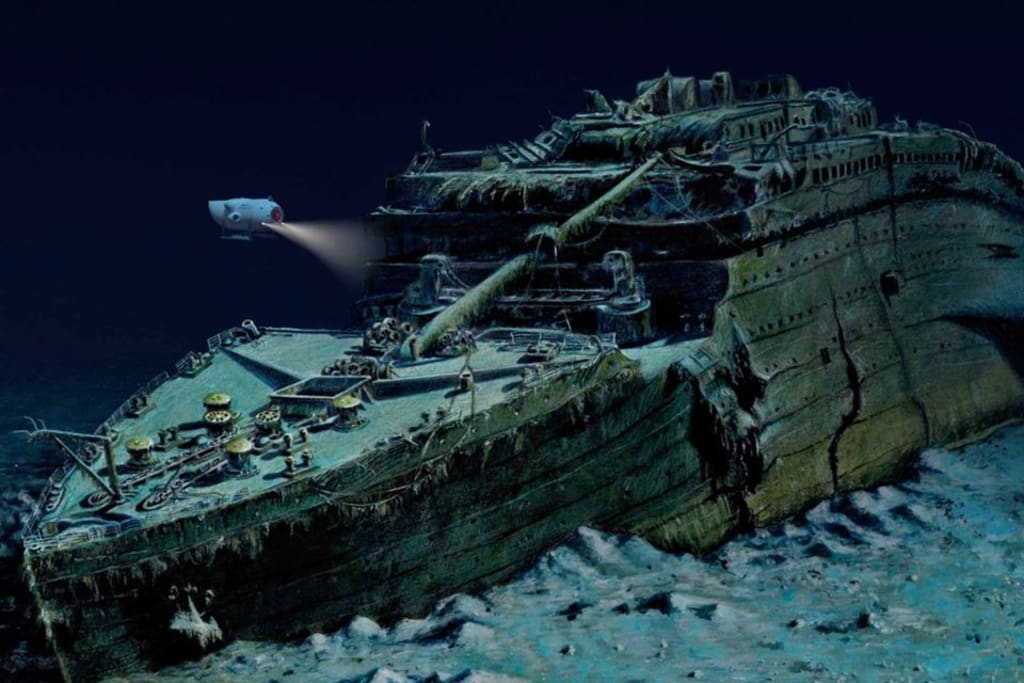THE SECRETS BEHIND THE FALL OF THE TITANIC THAT WERE NEVER TOLD ABOUT
Did you know? here's some of the untold secrets behind the fall of The Mighty Titanic ship vessel

The sinking of the Titanic is one of the most infamous maritime disasters in history. The "unsinkable" ship collided with an iceberg on April 14, 1912, leading to the loss of more than 1,500 lives. While the main cause of the tragedy is widely attributed to the collision itself, there were several contributing factors and secrets behind the fall of the Titanic.
Design Flaws:
The Titanic was touted as a marvel of engineering and a symbol of human ingenuity. However, it had several design flaws that made it vulnerable to a disaster of this magnitude. The ship's builders, Harland and Wolff, opted for a design with insufficient watertight compartments. When the Titanic struck the iceberg, the impact breached multiple compartments, causing the ship to flood and eventually sink.
Speed and Iceberg Warnings:
Despite receiving numerous warnings about the presence of icebergs in the ship's path, Captain Edward J. Smith chose to maintain a high cruising speed. The Titanic was sailing through the North Atlantic, known for its treacherous iceberg-filled waters. The ship's speed of around 22 knots, coupled with inadequate precautions, significantly reduced the time available for the crew to react and take evasive action.
Insufficient Lifeboats:
One of the most shocking revelations after the sinking was the insufficient number of lifeboats on board. The Titanic had a total capacity of 2,435 passengers and crew, but it carried only 20 lifeboats, enough to accommodate just over half of the people on board. This shortage was primarily due to the belief that the ship was unsinkable and that lifeboats were primarily for ferrying passengers to nearby rescue ships.
Inadequate Training and Drills:
The crew members of the Titanic were ill-prepared for a disaster of such magnitude. Lifeboat drills and safety procedures were infrequent and poorly executed. This lack of training and preparedness resulted in chaos and confusion during the evacuation process, with some lifeboats being launched with fewer passengers than their full capacity.
Communication Failures:
Despite the presence of wireless telegraph equipment on the Titanic, communication failures played a significant role in the tragedy. The wireless operators received multiple iceberg warnings from other ships but failed to pass on crucial information to the bridge officers. This lack of communication deprived the crew of valuable time to alter the ship's course or take necessary precautions.
Complacency and Overconfidence:
The prevailing sentiment among the crew and passengers was one of complacency and overconfidence in the ship's supposed invincibility. This mindset led to a disregard for potential dangers and a delayed response to the iceberg warnings. The belief that the Titanic was unsinkable instilled a false sense of security, which proved catastrophic when disaster struck.
Class-Based Hierarchy:
Another secret behind the fall of the Titanic was the class-based hierarchy that existed on board. The majority of the lifeboats were allocated to first-class passengers, while those in lower classes were left with limited options for escape. This prioritization based on social class contributed to a higher mortality rate among the second and third-class passengers.
In conclusion, the fall of the Titanic was a result of multiple factors, including design flaws, the captain's decision-making, insufficient lifeboats, inadequate training, communication failures, complacency, and class-based hierarchy. The combination of these secrets and mistakes led to one of the most tragic maritime disasters in history, leaving an indelible mark on the collective memory of humanity. The lessons learned from the Titanic's sinking have since shaped maritime safety regulations and emphasized the importance of preparedness, communication, and equal access to life-saving resources.
About the Creator
Enjoyed the story? Support the Creator.
Subscribe for free to receive all their stories in your feed. You could also pledge your support or give them a one-off tip, letting them know you appreciate their work.





Comments
There are no comments for this story
Be the first to respond and start the conversation.